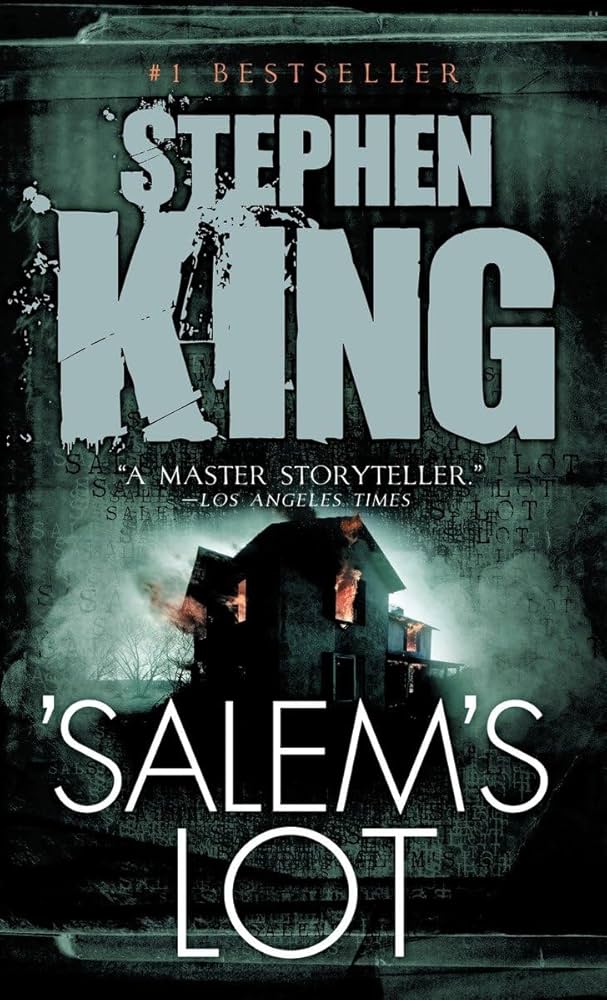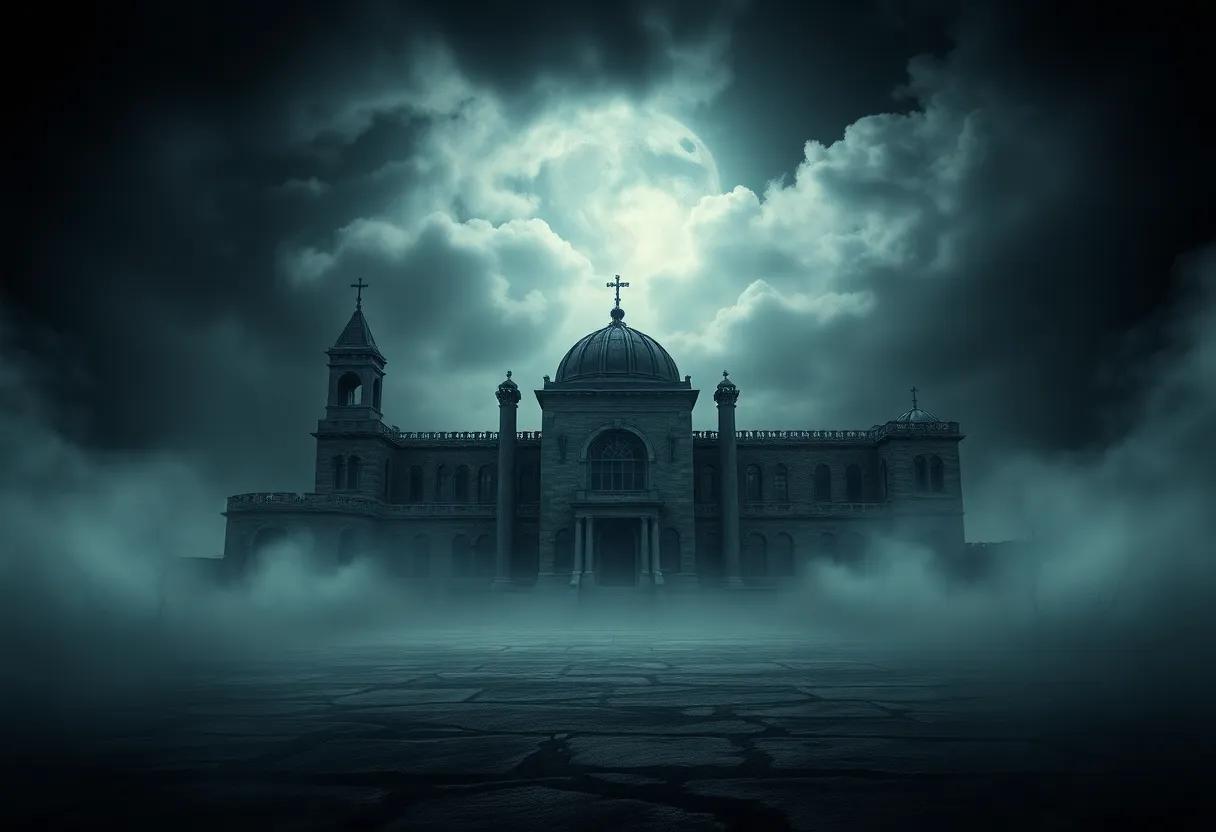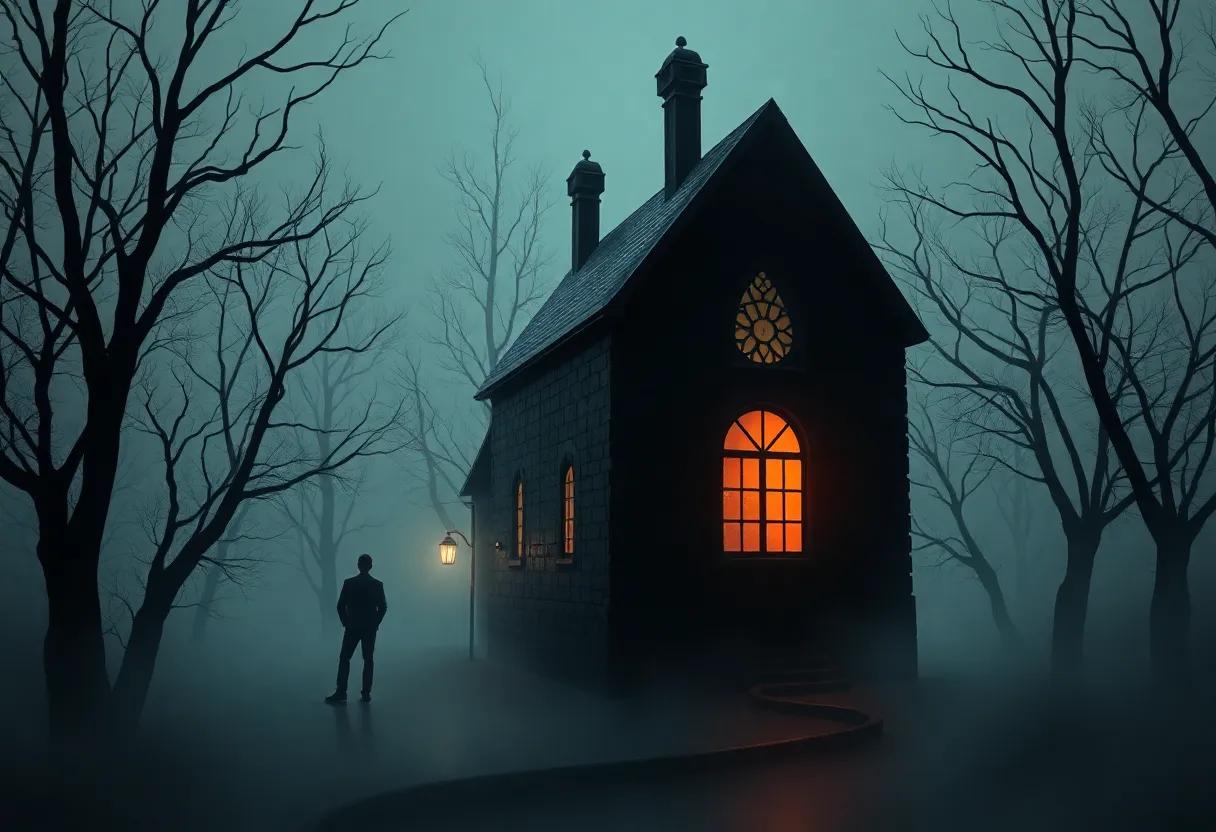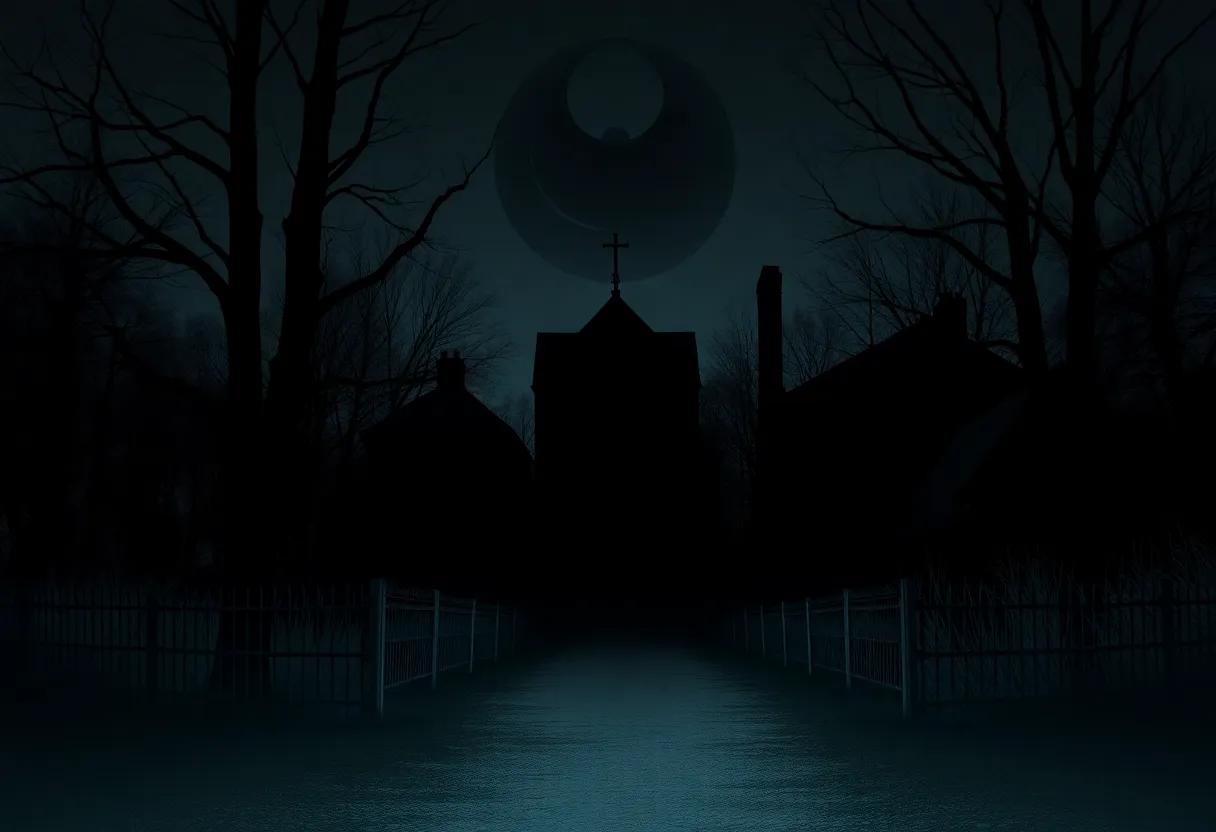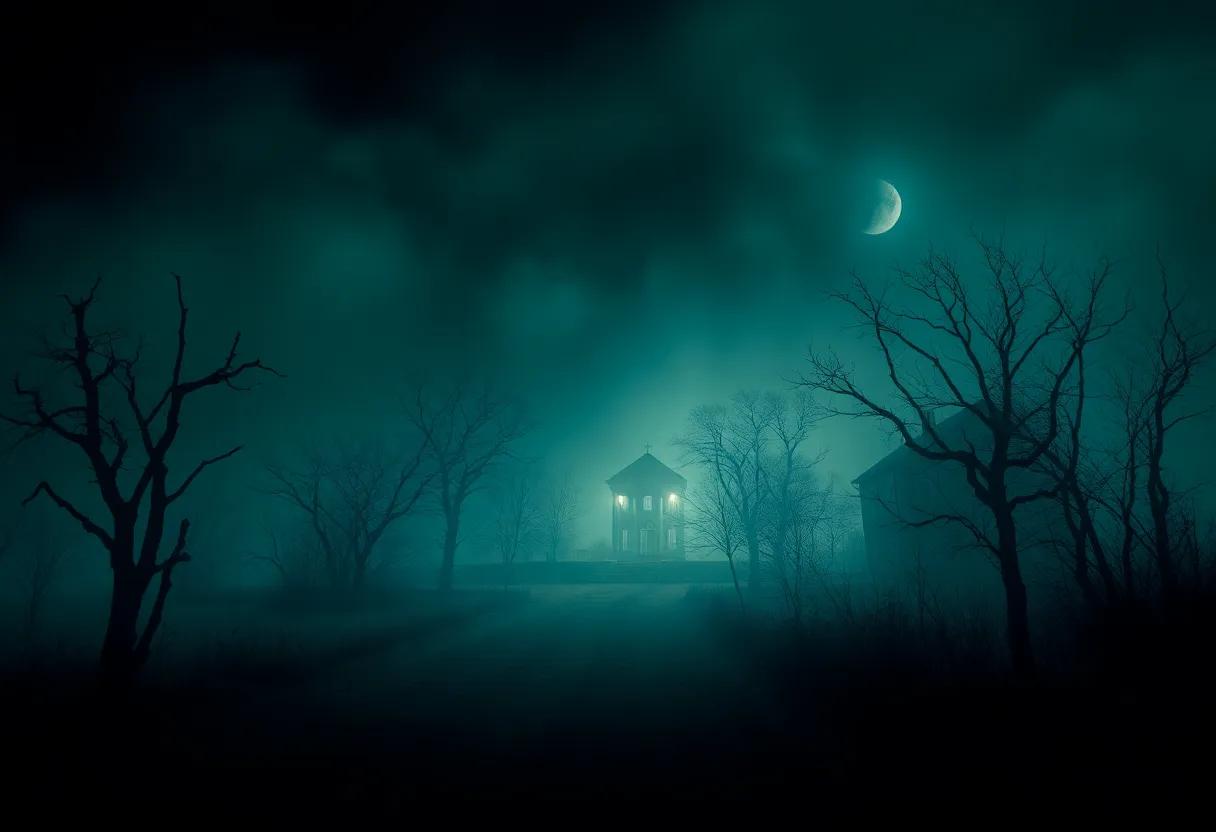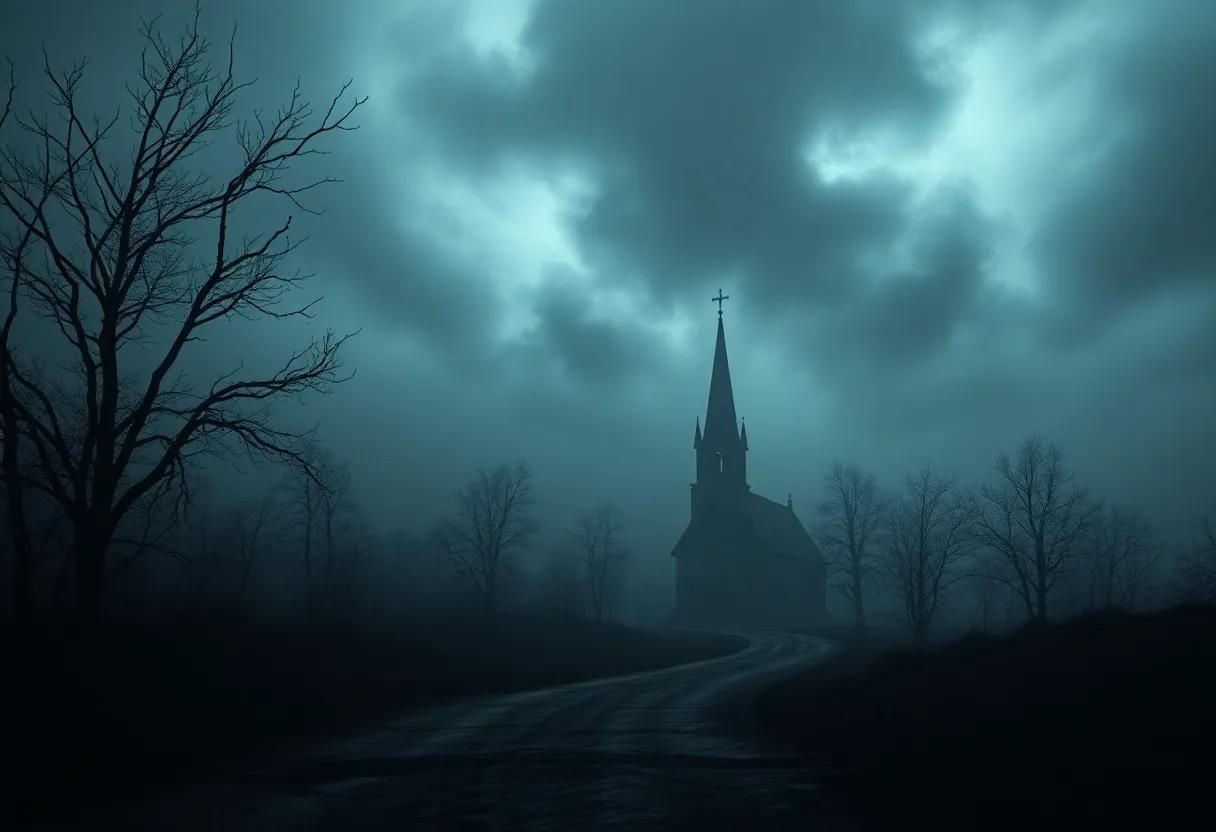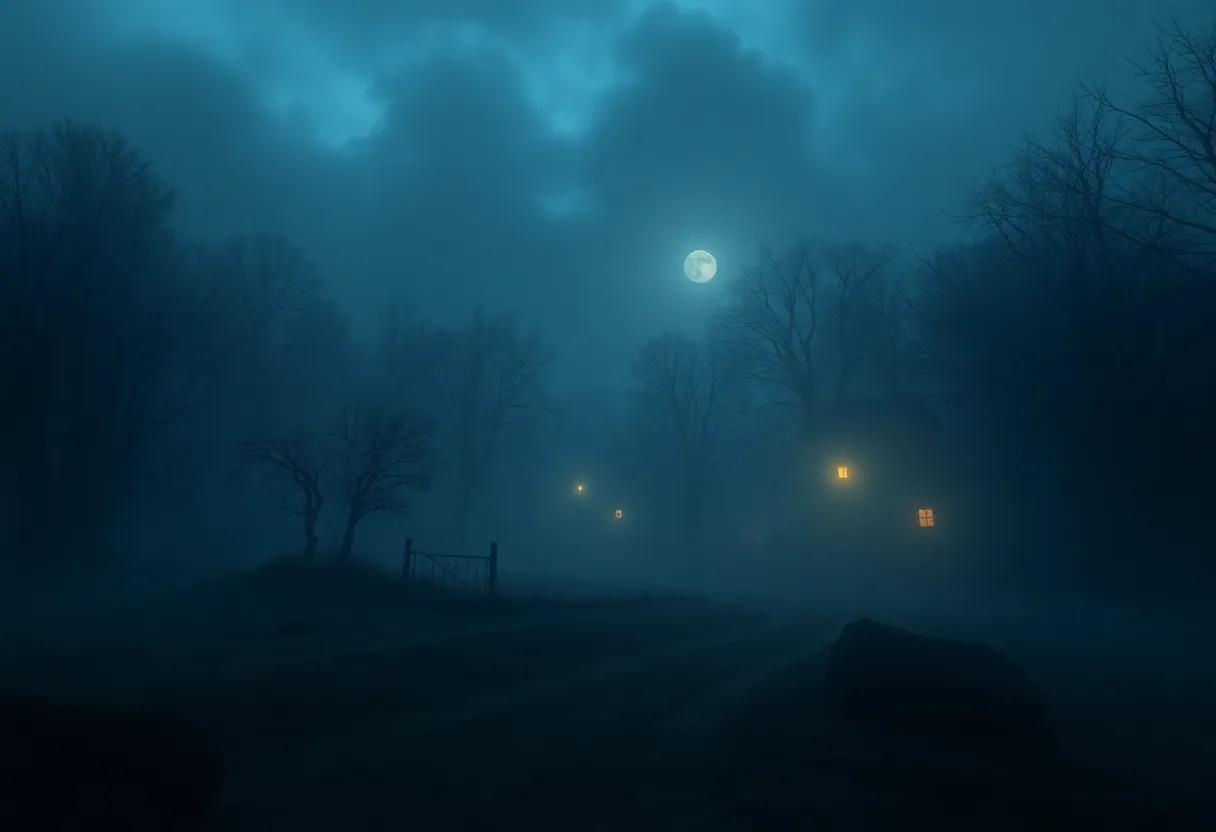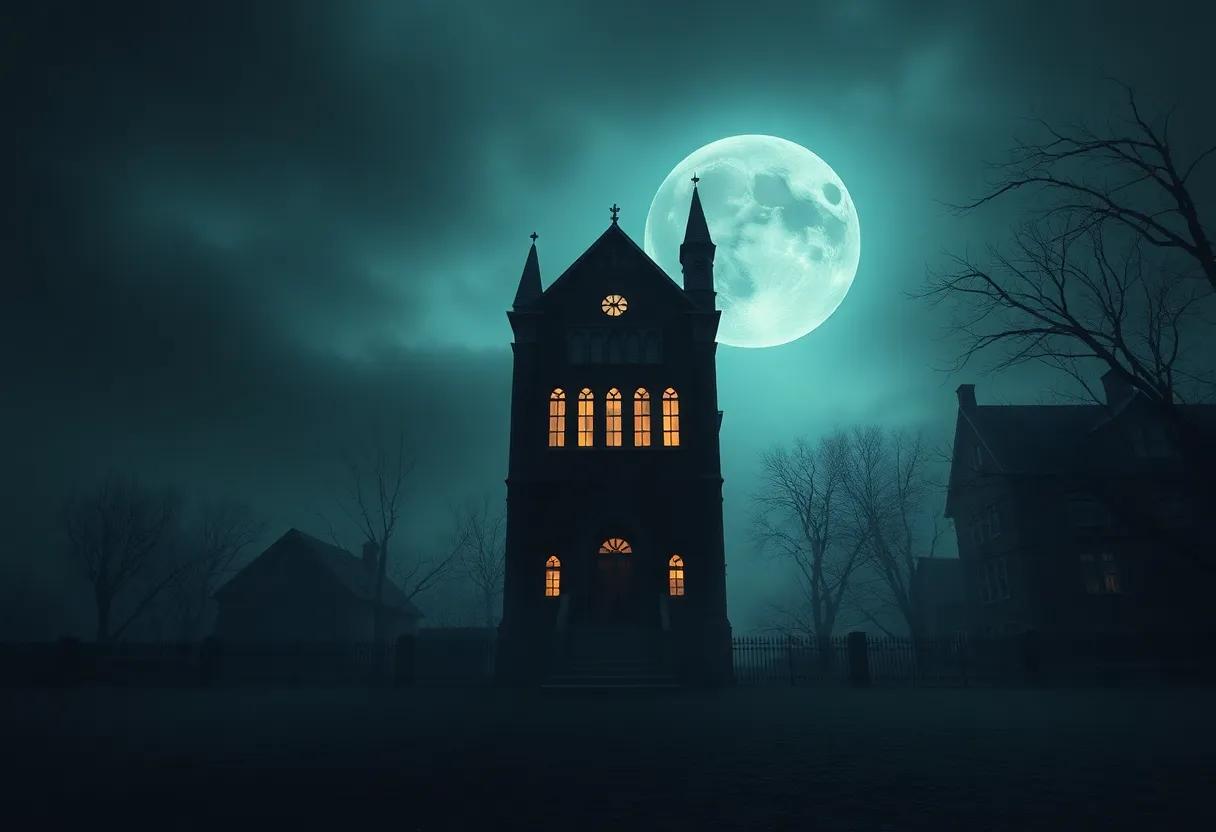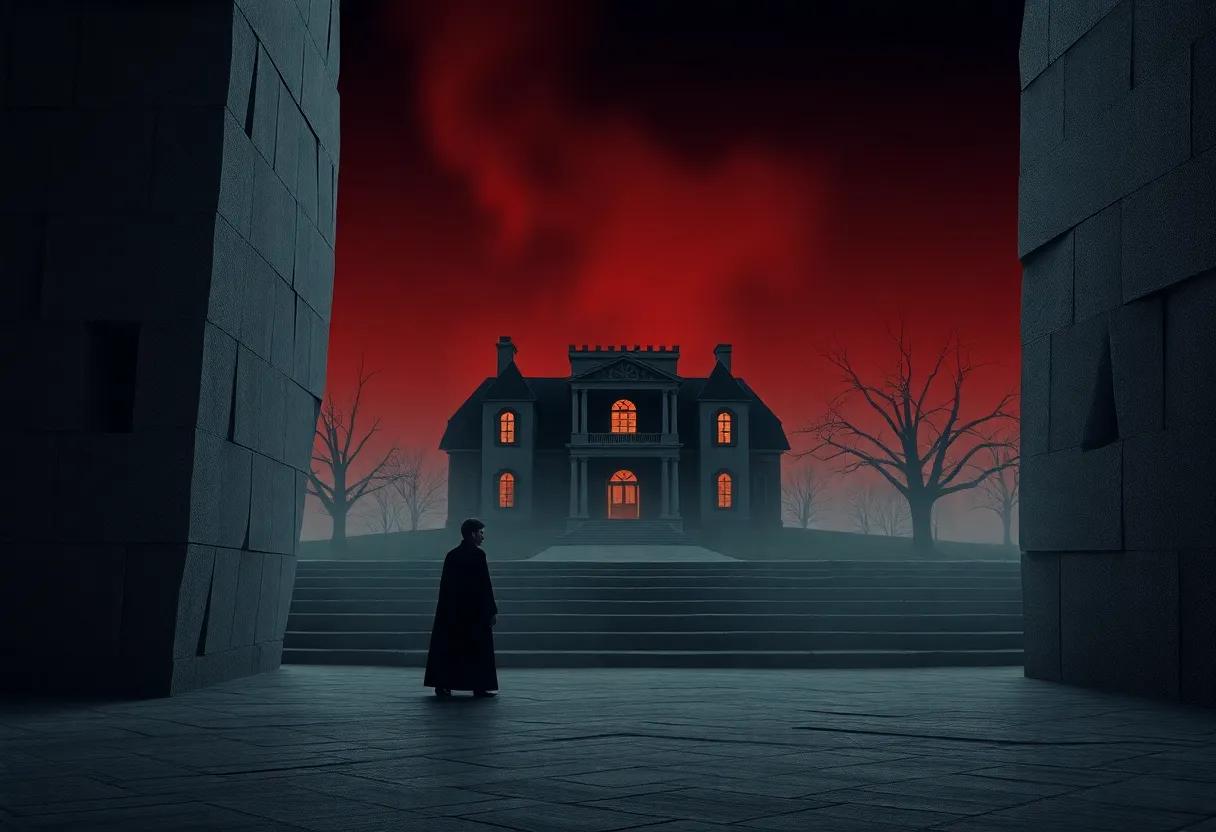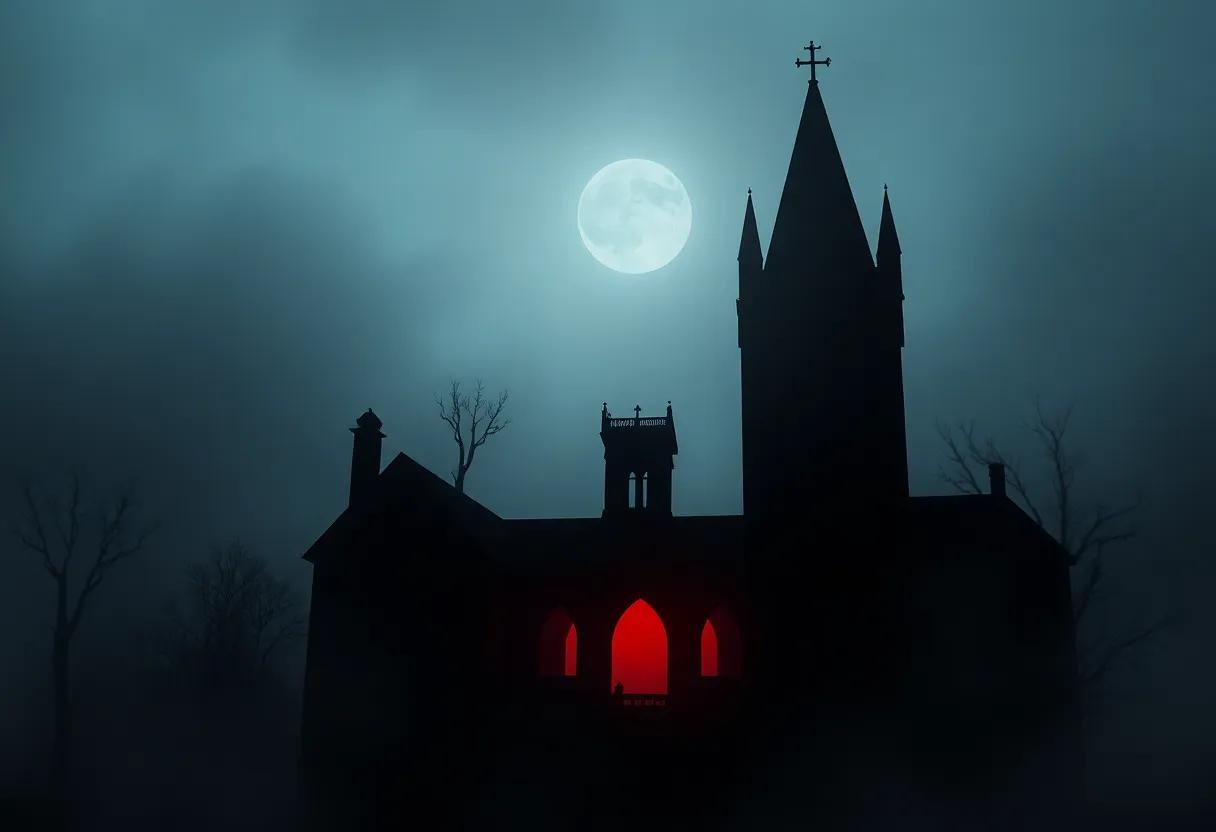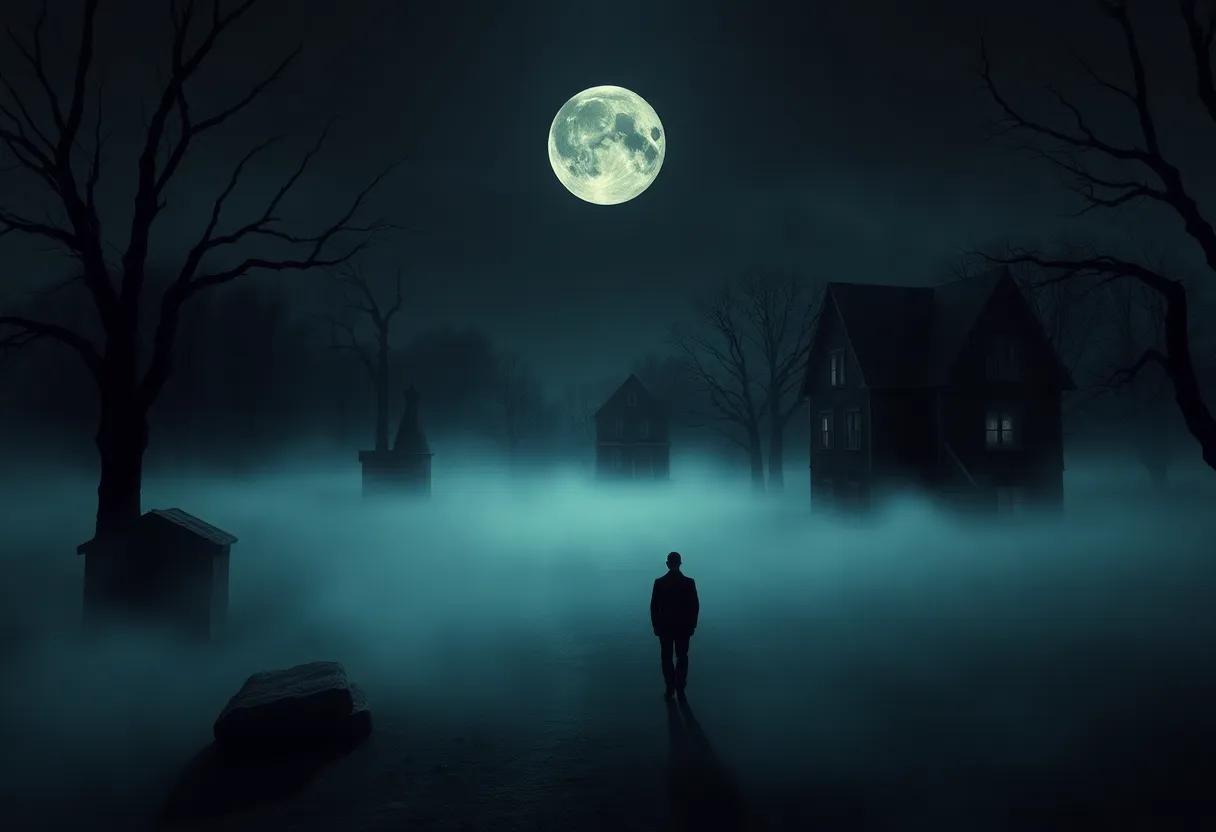In the shadowy corners of literary horror, where dread and longing intertwine, Stephen King’s ‘Salem’s Lot stands as a testament to the author’s unparalleled ability to evoke fear from the familiar. “” invites readers to venture beyond the surface of this chilling tale, delving into the themes, characters, and settings that make it a cornerstone of modern horror fiction. from the haunting streets of Jerusalem’s Lot to the insidious presence of its vampires, this exploration unravels the intricate layers of King’s narrative, inviting us to confront our own fears and the moral complexities of a sleepy town under siege. With a blend of analysis and admiration,this review illuminates the complexities of a novel that not only terrifies but also resonates with the human experience—offering insights that reach far into the darkness within us all.
The Haunting Atmosphere of Jerusalem’s Lot and Its Impact on the Storytelling Experience
Stephen King masterfully crafts the eerie setting of Jerusalem’s Lot, transforming the quiet, seemingly idyllic town into a crucible of fear and dread. The atmosphere is steeped in a palpable tension, where the familiar comforts of small-town life are corrupted by the sinister presence of the supernatural. As the characters navigate the shadows of their once-peaceful surroundings, readers are drawn into a world where the mundane is constantly under threat from the unknown. This duality – the ordinary juxtaposed with the horrific – serves to heighten the suspense and create an immersive experience for the audience. Key elements contributing to this haunting ambiance include:
- Isolation: The town feels cut off from the rest of the world, amplifying the sense of entrapment.
- Decay: Abandoned buildings and the lingering remnants of history evoke a sense of mourning for what once was.
- Nightfall: Darkness envelops the town, acting as a character itself that obscures and unveils horror in equal measure.
In this nightmare landscape, King utilizes both the physical and emotional landscapes of Jerusalem’s Lot to weave a narrative that lingers long after the last page is turned. The looming presence of the Marsten House, with its sinister reputation and ghostly tales, becomes a focal point of dread, serving as a metaphor for the secrets and sins that haunt both the characters and the town itself. Through vivid imagery and layered storytelling, King invites readers to not just witness but feel the encroaching terror, immersing them deeply into the essence of fear that permeates this cursed locale. An exploration of prominent thematic elements reveals how King maintains this oppressive atmosphere:
| Theme | Description |
|---|---|
| Fear of the Unknown | The lurking dread of what lies beyond human understanding. |
| Community | The fragility of trust within a tight-knit group facing external forces. |
| Redemption | Characters seeking to confront their past ultimately face the darkness. |
Character Development within the Vein of Fear: Unpacking the Protagonists and Antagonists
In Stephen King’s ‘Salem’s Lot, character development is intricately woven into the fabric of fear, creating a gripping narrative that showcases both the protagonists and antagonists in a battle not just for survival, but for the soul of the town itself. At the forefront, we find Ben Mears, a writer returning to the town he once fled, only to face his past demons alongside the emerging darkness of the vampire presence.Mears embodies the struggle for redemption, juxtaposed against the encroaching terror of Kurt Barlow, the ancient vampire whose manipulative prowess seduces the townsfolk into apathy and despair. The duality of these characters highlights the internal and external conflicts that define ‘Salem’s Lot, where fear acts as both a motivator and a weapon.
As the narrative unfolds, we witness a change in several key figures, illustrating how fear alters perception and drives choices. Notably, characters such as Susan Norton and Mark Petrie serve as reflections of hope and resistance against the encroaching evil, yet they, too, are forced to confront their vulnerabilities in a town descending into chaos.The shifting dynamics between these characters and their adversaries illuminate profound themes of community versus isolation and the fragility of human resilience. Through a careful interplay of revelation and terror, King crafts a complex tableau where each character’s journey not only deepens the horror but invites readers to ponder their own reactions to fear when faced with the unknown.
The Symbolism of Darkness: Understanding the Deeper Themes in ‘Salem’s lot
In Stephen King’s ‘Salem’s Lot,darkness transcends its literal definition,serving as a multifaceted symbol that encompasses fear,repression,and the lurking presence of evil. The small town of Jerusalem’s lot, with its eerie landscape and shadowy corners, reflects the deeper voids within its inhabitants. The pervasive darkness is not merely a backdrop for supernatural events but a thematic element that reveals the secrets and sins of the townsfolk.This duality pushes readers to confront their own shadows,highlighting that within everyone lies an element of darkness that can erupt if left unchecked. Key themes that emerge from this complex symbolism include:
- Isolation: The physical and emotional distance between characters intensifies the sense of hopelessness.
- Fear of the Unknown: Darkness becomes a metaphor for dread, representing unspeakable truths lurking just beyond perception.
- Corruption: The encroaching evil serves as a mirror to the moral decay in the hearts of the town’s residents.
As the narrative unfolds, the town’s inability to confront its dark underbelly paints a grim picture of a community paralyzed by denial and complicity. This refusal to acknowledge the darkness ultimately leads to its downfall, illustrating that ignorance can be as destructive as malevolence itself. From the family dynamics riddled with buried secrets to the gradual transformation of the townsfolk into shadows of their former selves, King artfully weaves a cautionary tale. The darker the narrative becomes, the clearer it is that:
| Symbol | Interpretation |
|---|---|
| Darkness | A representation of hidden fears and repressed desires. |
| Vampires | Embodiments of corrupting influence and moral decay. |
| The Town | A microcosm of society grappling with its collective sins. |
Narrative Techniques: How Stephen King Crafts an Unforgettable Horror Experience
Stephen King expertly utilizes a variety of narrative techniques in ‘Salem’s Lot to immerse readers in the creeping dread that saturates the narrative. One prominent method is his use of multiple perspectives, which allows the story to unfold from the viewpoints of several characters, giving readers a multifaceted understanding of the events in the town. As the horrors emerge, King expertly juxtaposes ordinary human experiences with the supernatural, crafting an atmosphere where even mundane moments are tinged with tension. This technique not only heightens suspense but also fosters a palpable sense of vulnerability among his characters, making their struggles resonate deeply with the audience. Each character’s backstory and personal fears contribute to an overarching feeling of impending doom that solidifies the novel’s impact.
Another fascinating aspect of King’s approach is his ability to create a sense of place that feels as alive and foreboding as the antagonistic forces within the story. Through vivid descriptions, he paints the small town of Jerusalem’s Lot as a character in its own right—its dark corners and abandoned buildings echoing the lurking evils within. King manipulates time with elegance,shifting between the town’s dark past and the present to reveal the weight of history that bears down on its inhabitants. This interplay not only deepens the narrative but paves the way for the sinister transformation that overtakes the town and its residents. By anchoring his horror in a well-developed setting, King amplifies the stakes, leaving readers with an indelible sense of fear that lingers well beyond the final pages.
The Unique Intersection of Small-Town Life and Supernatural Horror
The tapestry of small-town life is frequently enough woven with threads of nostalgia and community,yet beneath its quaint exterior lurks a suffocating darkness. Stephen King’s ‘Salem’s Lot masterfully juxtaposes the familiar and the horrific,portraying a town where everyone knows each other,but secrets lie just below the surface. In this seemingly idyllic setting, daily rituals of small-town existence — like:
- Community gatherings - Neighbors come together for local events.
- School functions - Children laugh and play, forming bonds.
- Family traditions – Generational stories passed down.
These routines provide a false sense of security, which makes the emergence of supernatural elements all the more jarring. The invasion of vampiric forces introduces not just a physical threat but also a psychic one, revealing deeply buried fears and conflicts among the townsfolk. As everyday life disintegrates into chaos, residents grapple with their own darkness, making the battle against the supernatural one of internal struggles as much as external confrontations. In essence,’Salem’s Lot captures the fragile line between normalcy and terror,illustrating how quickly the familiar can become the grotesque.
Exploring Fear: The Role of Psychological Elements in Stephen King’s Narrative
At the core of Stephen King’s narrative lies a potent blend of psychological elements meticulously crafted to elicit fear and unease. In ‘Salem’s Lot, the small town serves as a microcosm of human vulnerability, where the familiar morphs into the uncanny. King’s exploration of isolation emerges vividly, with the townsfolk slowly succumbing to an insidious darkness. The fear of the unknown is brought to life as characters grapple with their hidden secrets, amplifying their paranoia and mistrust. His characters embody various archetypes—the skeptic, the believer, the tortured soul—each adding a complex layer to the psychological landscape that permeates the narrative.
Moreover, the use of symbolism enriches the reader’s experience, transforming mundane objects into vessels of dread. The juxtaposition of the quaint suburban life against the backdrop of a vampiric threat brings forth a chilling narrative tension that King masterfully exploits. The omnipresent sense of impending doom serves as a reminder of the fragility of human existence, as even the most grounded individuals can falter in the face of their deepest fears. Through vivid character studies and haunting scenes,King compels readers to confront their own internal darkness,making each page a mirror reflecting the psychological battles we frequently enough conceal.
Imagery and Setting: Visualizing the Eerie Landscape of ‘Salem’s Lot
In Stephen King’s ‘Salem’s Lot, the landscape serves not just as a backdrop but as a character in its own right, echoing the eerie themes that permeate the narrative. The small town of jerusalem’s Lot, nestled in the heart of Maine, is cloaked in an unsettling atmosphere, where the familiar comfort of a rural setting is warped into something sinister. As the sun descends, shadows lengthen and the once vibrant trees cast grotesque shapes against the moonlight, leaving a palpable tension in the air. This juxtaposition of quaintness and horror is illustrated through:
- Darkened Streets: Abandoned and silent, they foreshadow the lurking dread.
- The Marsten House: An imposing, dilapidated mansion that epitomizes malevolence.
- Fog-Blanketed Forests: Enveloping the town, instilling a sense of disorientation and fear.
King masterfully employs vivid imagery to etch the town’s physicality into the reader’s mind, creating a palpable sense of discomfort.The landscapes shift from a quaint Americana to a foreboding vista, where even the simple act of walking down the street can become fraught with menace. The oppressive stillness serves as a reminder of the unspeakable horrors hidden beneath the surface, encapsulated in the haunting quiet that blankets Jerusalem’s Lot. To better understand the depth of this eerie setting, consider the following table that illustrates the contrasting day and night experiences in the town:
| Time of Day | Atmosphere | Key Elements |
|---|---|---|
| Day | Deceptively Peaceful | Children playing, sunny streets, blooming flowers. |
| Night | Foreboding | Muffled whispers,shadows creeping,an unseen presence. |
unlocking Reader Emotions: The Pull of Fear and Empathy in King’s Character arcs
Stephen king’s ‘Salem’s Lot is a masterclass in weaving fear and empathy into character arcs that resonate powerfully with the reader. The town of Jerusalem’s Lot serves as more than just a backdrop; it becomes a living, breathing entity where the ordinary collides with the horrifying. As the characters grapple with the manifestation of evil in the form of the vampire Kurt Barlow, their fears drive them into desperate actions, forcing the audience to confront their own vulnerabilities. This duality is notably evident in characters such as Ben Mears and Mark Petrie, who embody the struggle between understanding and succumbing to terror. Their journeys highlight how fear can isolate individuals, yet it also carries the potential to forge deep connections and alliances in the face of adversity.
Along with fear, King’s exploration of empathy elevates the narrative, inviting readers to forge emotional bonds with his characters. The struggle of each resident reflects worldwide themes of loss, love, and the fight against the unknown. King crafts a rich tapestry where characters like Susan Norton and Straker evoke both compassion and dread, inviting readers to bear witness to their humanity amidst chaos. This tension supports a narrative structure that challenges notions of good and evil, ultimately leaving readers to question their own responses to fear. Through intricate character development and relatable fears, ‘Salem’s Lot delivers a chilling yet profoundly empathetic experience that lingers long after the final page is turned.
Comparative Analysis: How ‘Salem’s Lot Holds Up Against King’s Other Works
What makes ‘Salem’s Lot distinct, though, is its focus on small-town life, which serves as a microcosm for the broader societal flaws exposed in King’s later works. The town of Jerusalem’s Lot is not just a backdrop, but a character in its own right, reflecting communal fears and prejudices. This nuanced portrayal stands in contrast to the grand, often cosmic horror depicted in novels like It and Pet sematary.The evolution of King’s writing can be illustrated through the following aspects:
| Aspect | ‘Salem’s Lot | Later Works |
|---|---|---|
| Setting | Small Town | Varied Locations |
| Villain | Vampire | Supernatural Beings |
| Thematic Focus | Community Dynamics | Personal Demons |
| Character Complexity | Vividly relatable | Often Archetypal |
Revisiting the Genre: The Lasting Legacy of ‘Salem’s Lot in Horror Literature
Stephen King’s ‘Salem’s Lot stands as a monumental work that not only shaped the vampire genre but also carved a niche for itself in the broader landscape of horror literature. With its portrayal of a small town becoming a breeding ground for malevolent forces,king’s novel redefined the rules of supernatural horror,weaving together ordinary life with the uncanny. This blending of the familiar with the nightmarish serves to amplify the fears that lie beneath the surface of seemingly mundane existence, providing readers with a chilling reflection of reality. The unconcealed darkness that lurks within the inhabitants of jerusalem’s Lot compels us to confront the unsettling possibility that evil can manifest in the most unexpected individuals.
Moreover,the influences of ‘Salem’s Lot can be observed echoing through a myriad of works in contemporary horror. Authors draw inspiration from King’s masterful ability to create complex characters and immerse readers in claustrophobic locales.The novel’s effective use of isolation and community dynamics as backdrops for horror has been a blueprint for works across various mediums.Notable aspects include:
- The Use of setting: King’s depiction of a small-town atmosphere enhances the tension.
- Character Complexity: The interwoven stories of the townspeople add depth to the horror.
- Pacing and Build-up: The gradual descent into terror captivates readers, drawing them into the suspense.
As we analyse King’s work, it becomes evident why ‘Salem’s Lot is still referenced, discussed, and adapted decades later. With each retelling, the narrative evolves, proving that the themes of fear, paranoia, and the nature of evil are timeless and universal. The novel invites readers not merely to witness horror but to explore their own dark corners,a legacy that continues to resonate through the hearts and minds of a new generation of writers and horror aficionados.
A Study in Human Nature: The Duality of Characters and their moral Complications
In Stephen King’s ‘Salem’s Lot, the characters serve as intricate studies of the human condition, reflecting the perpetual struggle within individuals between light and dark. Each character embodies a unique moral complexity that allows readers to explore the depths of human nature. From the tormented novelist Ben Mears, whose return to the town rekindles both personal demons and the awakening of something more sinister, to the chilling figure of Kurt Barlow, a vampire that symbolizes the allure of power and the consumption of innocence, King illustrates how ordinary lives can be upended by the forces that lurk within and beyond us. Key themes arise, such as the loss of innocence, the nature of evil, and the cost of secrets, all wrapped within a haunting narrative that keeps us questioning the very essence of morality.
The town itself acts as a character, embodying the collective guilt and hidden malice of its inhabitants. As the darkness spreads, the dichotomy between good and evil becomes more pronounced, forcing characters like Mark Petrie and Susan Norton to confront their own fears and desires. The struggle against Barlow’s malevolence is not merely a fight for survival; it becomes a profound exploration of whether humanity can truly be saved when faced with overwhelming darkness. This moral ambiguity and the challenge of good versus evil prompt readers to reflect on their own choices and the lurking shadows in their lives. King skillfully builds a narrative that serves as both a horror story and a mirror to our fragmented selves.
The Evolution of Vampire Mythos in ‘Salem’s Lot: A Fresh Perspective
The portrayal of vampires in literature has evolved dramatically over centuries, with each generation adding its unique twist to the age-old myth. In ‘salem’s Lot, Stephen King reinvents the creature of the night by blending elements of traditional vampire lore with contemporary societal fears. The vampires here are not merely aristocratic predators but instead embody the malignant presence lurking within the small-town façade. Barlow, the novel’s primary antagonist, represents a shift towards a more primal and instinctual terror, underscoring the idea that evil can emerge from the familiar. This approach transforms the vampire into a symbol of societal decay, reflecting the underlying darkness of human nature and community disintegration.
King skillfully weaves the narrative to blur the lines between reality and the supernatural, leading readers through an atmospheric landscape reminiscent of classic horror while concurrently grounding it in real human experiences. As characters confront the vampire threat, they also wrestle with personal demons and the moral challenges within their community, questioning the very fabric of trust and integrity. The evolution of the vampire mythos in this context invites readers to consider broader themes such as isolation, fear of the unknown, and the consequences of complacency. It echoes the sentiments of an era burgeoning with uncertainty, making ‘Salem’s Lot not only a gripping horror story but also a poignant commentary on societal issues that resonate to this day.
Recommendations for Further Reading: Exploring More of King’s Terrifying Universe
if you’ve been captivated by the sinister allure of ‘Salem’s Lot, you might want to delve deeper into Stephen King’s expansive universe. Here are some noteworthy titles that showcase his masterful storytelling and the chilling themes that have become his hallmark:
- It – Explore the haunting presence of Pennywise and the power of childhood fears.
- Pet Sematary – A tale that explores grief and the terrifying consequences of tampering with death.
- The Shining – Follow the descent into madness in an isolated hotel that holds dark secrets.
- misery – A disturbing exploration of obsession and captivity that will keep you on the edge of your seat.
- 11/22/63 - A gripping time travel narrative that intertwines history with an alternate reality of terror.
For readers eager to understand more about Stephen King’s influence on horror literature, consider dipping into critical analyses and companion books that dissect his work.Notable titles include:
| Title | Author | Description |
|---|---|---|
| Stephen king: A Critical Companion | John McCrea | An insightful guide to King’s themes and narrative techniques. |
| Danse Macabre | Stephen King | A non-fiction exploration of horror in literature and film. |
| The Stephen King Universe | Stanley Wiater | A extensive guide to king’s interconnected stories. |
Authorial Insight: understanding Stephen King’s Vision and Craft in ‘Salem’s Lot
In Summary
As we close the pages of “Exploring the Darkness: A Deep Dive into Stephen King’s ‘Salem’s Lot,” it becomes evident that this analysis is not merely an exploration of a single novel but a journey into the very essence of horror itself. The author masterfully navigates the intricate web of fear, isolation, and the haunting power of the unknown, illuminating the psychological undercurrents that make King’s work resonate across generations.
Through this thoughtful examination, we are reminded that ‘Salem’s Lot is much more than a tale of vampires; it is a mirror reflecting our own vulnerabilities and the darkness that lurks not only in the quiet corners of fictional towns but within ourselves. each insight unearthed serves as a testament to King’s genius in weaving narratives that continue to captivate and terrify.
“Exploring the Darkness” invites readers to reevaluate their understanding of fear and the art of storytelling. As we step back into the light, we carry with us the lessons learned from both King and the depths of his chilling creation—a reminder that sometimes, to truly understand the light, we must first confront the shadows.

